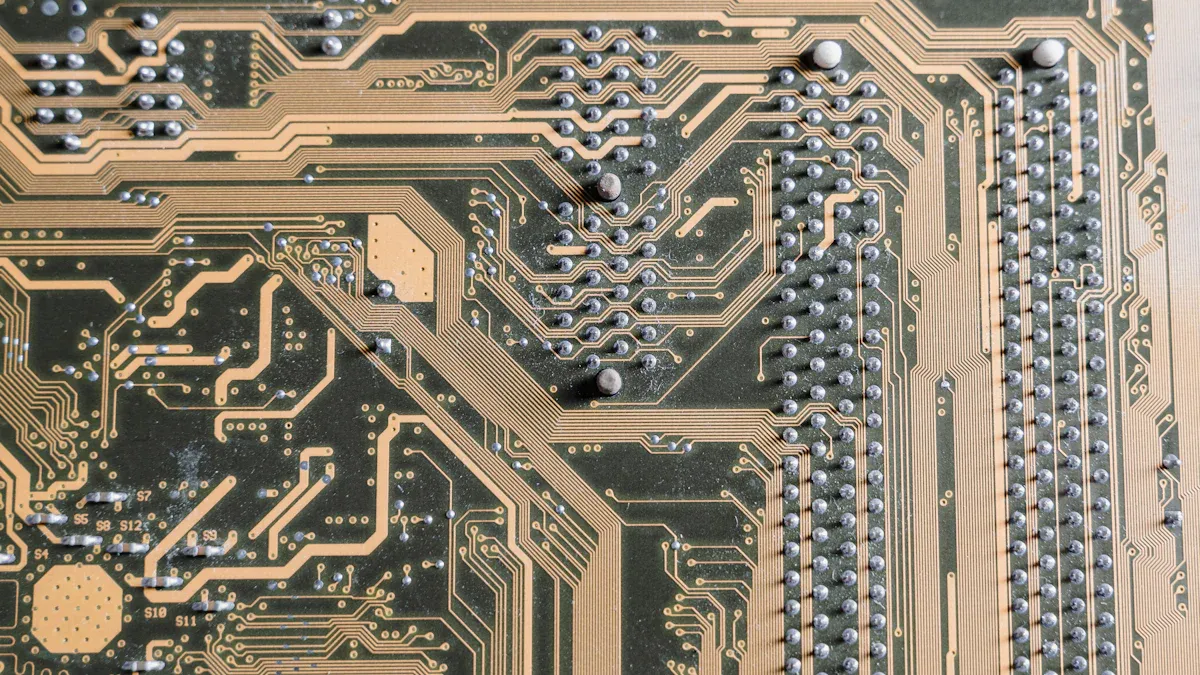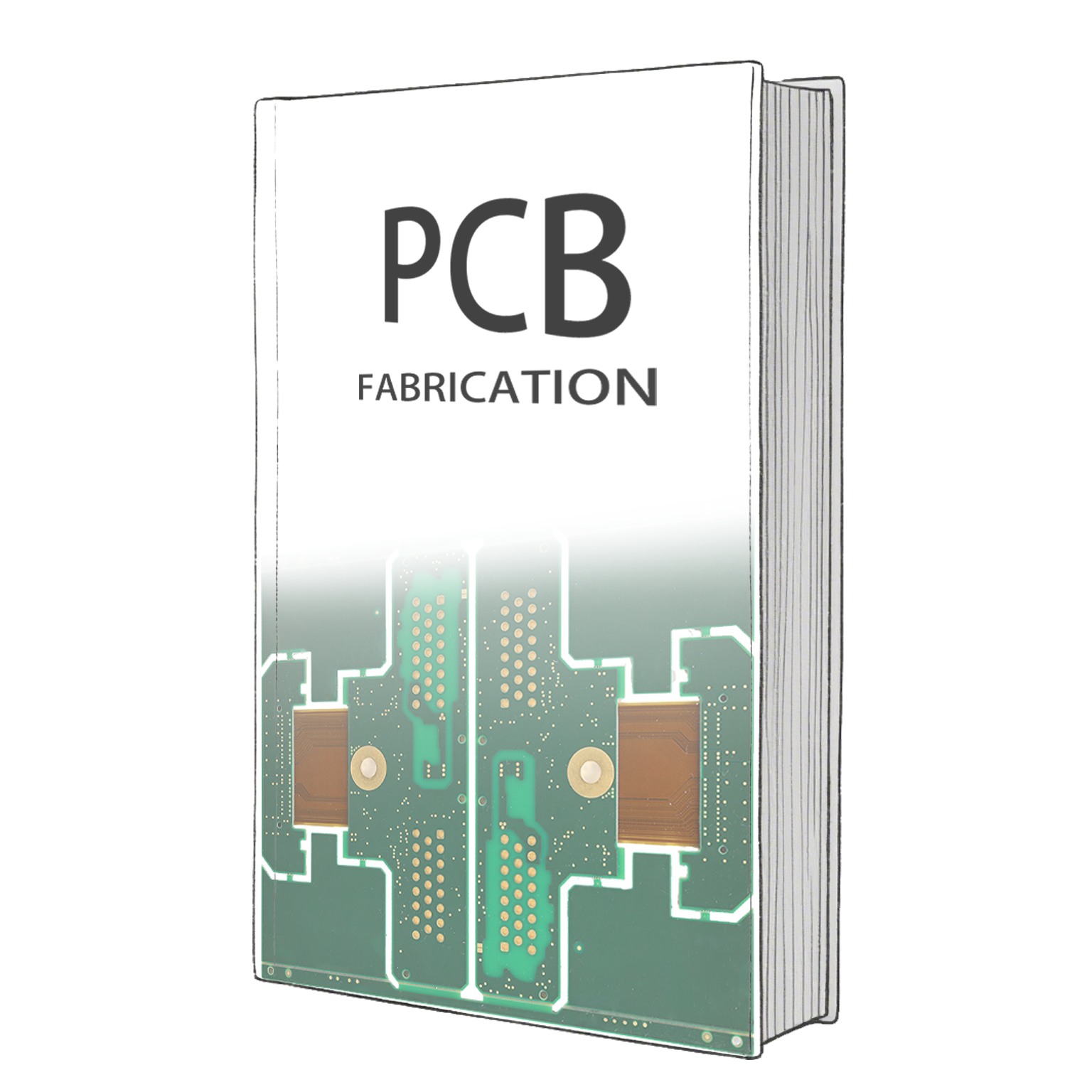King Field Exports Ultrasonic Detector PCB Motherboards to Canada in 2023
In 2023, King Field achieved a remarkable milestone by exporting ultrasonic detector PCB motherboards to Canada. This accomplishment reflects the growing global demand for advanced ultrasonic diagnostic equipment PCB, driven by technological innovation and the need for efficient diagnostics.
Salesperson Cindy’s First Contact With Canadian Customers
Cindy Obtains Customer Contact Information From LinkedIn
I remember the day Cindy, our dedicated salesperson, took the first step toward connecting with Canadian customers. She turned to LinkedIn, a platform brimming with professional opportunities. Cindy meticulously searched for potential clients in the medical and industrial sectors who might benefit from our ultrasonic diagnostic equipment PCB. Her approach was strategic. She filtered profiles based on industry relevance, company size, and location.
After identifying key contacts, Cindy crafted personalized messages that highlighted King Field’s expertise in PCB manufacturing. Her outreach was not just about selling a product; it was about building relationships. Within days, responses started pouring in. Canadian customers expressed interest in learning more about our capabilities. Cindy’s proactive efforts laid the foundation for a successful partnership.
Tip: Networking platforms like LinkedIn can be powerful tools for initiating international business relationships. A personalized approach often yields better results than generic outreach.
Get the GERBER and BOOM Files
Once Cindy established communication, the next step was to gather technical specifications. Canadian customers shared GERBER and BOOM files, essential for PCB manufacturing. These files contained detailed design data, including layer configurations, component placements, and routing information.
I reviewed the files alongside our engineering team. The GERBER files, compressed into a manageable size, provided a clear blueprint for the ultrasonic diagnostic equipment PCB. Here’s a snapshot of the file details:
| File Name | Type | Size | Date |
|---|---|---|---|
| K9Controller_Gerber_Files.rar | Gerber files | 63.04 kB | 03/05/2016 at 01:50 |
The BOOM files complemented the GERBER files by listing components, quantities, and sourcing details. Together, these documents ensured we had all the information needed to proceed with manufacturing. Cindy’s ability to secure these files quickly demonstrated her commitment to meeting customer needs.
QA Engineer Mr. Pan Evaluates the Documents
With the GERBER and BOOM files in hand, our QA Engineer, Mr. Pan, stepped in to evaluate their quality. His expertise in PCB manufacturing was invaluable. Mr. Pan conducted a thorough review, focusing on critical criteria to ensure the documents met our high standards.
Here are some of the key evaluation points:
- Quality checks during fabrication and assembly to guarantee reliability.
- Testing bare PCB quality and yield to identify potential issues early.
- Automated measurements for large-scale production to maintain consistency.
Additionally, Mr. Pan assessed the documents using specific criteria:
| Criteria | Description |
|---|---|
| Data Measurement | Data must be subject to actual measurement and checked for contradictions. |
| Shape Positioning | Requires specific NPTH holes for accurate positioning. |
| Milling Process | Use of large milling cutters to enhance efficiency and reduce tool breakage. |
| Bridge Plates | Attention to torque from splicing methods to avoid production issues. |
| Profile Data | Must include detailed descriptions for processing, including milling specs. |
Mr. Pan’s meticulous evaluation ensured that every detail aligned with our manufacturing capabilities. His dedication to quality control reassured Canadian customers that King Field could deliver reliable ultrasonic diagnostic equipment PCB.
Note: Rigorous document evaluation is crucial for maintaining high standards in PCB manufacturing. It minimizes errors and builds customer trust.
Challenges in PCB Manufacturing Process
Nickel-palladium Gold and Designated Gold Fingers
One of the first challenges we encountered was meeting the Canadian customer’s requirement for nickel-palladium gold plating and designated gold fingers. These features are critical for ensuring the durability and conductivity of the PCB, especially in ultrasonic diagnostic equipment. I recall how our team meticulously adjusted the plating process to achieve the precise thickness and uniformity required.
The preparation of holes before plating proved to be a crucial step. Improper preparation could lead to poor interconnections, which might fail over time. This was particularly challenging for RF circuit boards, where different materials required specialized treatment. Our engineers implemented advanced quality control measures to address this issue. By doing so, we significantly reduced defect rates, improving the lot reject rate from 5500 parts per million (PPM) to just 900 PPM. This achievement not only enhanced the reliability of our PCBs but also strengthened our reputation for quality.
Tip: Attention to detail in plating and hole preparation can make or break the performance of a PCB. Always prioritize quality control.
12 Layers Laminated – Perfect Overlap
Creating a 12-layer laminated PCB with perfect overlap was another significant hurdle. Achieving this level of precision required a combination of advanced technology and skilled craftsmanship. I remember how our team utilized signal integrity simulations to ensure accuracy at every stage.
These simulations helped us identify potential issues early, optimize the design, and analyze signal reflections. They also revealed problems like overshoot, undershoot, and crosstalk between adjacent traces. By addressing these challenges proactively, we ensured that the final product met the stringent requirements of ultrasonic diagnostic equipment.
The result was a perfectly laminated 12-layer PCB that delivered exceptional performance and reliability. This success demonstrated our ability to handle complex designs with precision and care.
The Errors of Aperture, Line Width, Edge, etc. are within the acceptable range
Maintaining tight tolerances for aperture, line width, and edge alignment was no small feat. These parameters directly impact the functionality and reliability of the PCB. I worked closely with our production team to ensure that all errors remained within the acceptable range.
We used automated measurements to maintain consistency across large-scale production. This approach minimized human error and ensured that every PCB met our high standards. Additionally, we optimized the component layout to enhance circuit performance. Strategic alignment of components reduced signal path resistance and inductance, addressing a key challenge in PCB manufacturing.
By focusing on precision and optimization, we delivered PCBs that exceeded our Canadian customer’s expectations. This experience reinforced the importance of meticulous attention to detail in every aspect of the manufacturing process.
Note: Precision is the cornerstone of PCB manufacturing. Even minor deviations can lead to significant performance issues.
PCB Motherboard Assembly Challenges
Filling Up of Scarce Materials
Sourcing materials for PCB assembly has always been a test of resilience. I remember how the global semiconductor supply chain posed significant challenges. Its intricate, multi-step process—spanning design, fabrication, assembly, testing, and packaging—made it vulnerable to disruptions. These disruptions often delayed our timelines and increased costs.
In 2023, 41% of industry professionals identified supply chain disruptions as their biggest hurdle. Regulatory and trade issues added another layer of complexity, affecting 28% of respondents. Workforce shortages also played a role, impacting 21% of the industry. Despite these challenges, we remained committed to delivering high-quality ultrasonic diagnostic equipment PCB to our Canadian customers.
To overcome these obstacles, we adopted a proactive approach. Our team worked tirelessly to secure alternative suppliers and streamline logistics. We also built strong relationships with trusted vendors, ensuring a steady flow of materials. This effort paid off, allowing us to meet our production goals without compromising quality.
Batch Wave Soldering
Batch wave soldering presented another challenge. This process, essential for attaching components to the PCB, required precision and consistency. I recall how we relied on advanced testing methods to ensure flawless execution.
For instance, we used Automated Optical Inspection (AOI) to detect assembly defects like insufficient solder and cracked joints. Electrical testing helped us identify faults and impedance deviations, ensuring the electrical integrity of each board. Stress testing, including vibration and thermal shock tests, evaluated the long-term reliability of our PCBs.
| Testing Method | Description | Purpose |
|---|---|---|
| Automated Optical Inspection (AOI) | Automatically detects assembly defects like insufficient solder and cracked joints. | Identifies quality problems in manufacturing. |
| Electrical Testing | Includes continuity tests, hi-pot tests, and in-circuit testing to check for faults and impedance deviations. | Ensures electrical integrity and identifies defects. |
| PCB Stress Testing | Involves vibration tests, thermal shock tests, and environmental exposure tests to assess reliability. | Evaluates long-term performance under stress. |
These rigorous testing protocols ensured that every PCB met our high standards. By addressing potential issues early, we delivered reliable products that exceeded customer expectations.
The Urgency of DIP Plug-in in the Short Term
The demand for DIP (Dual In-line Package) plug-in solutions has surged in recent years. Modern technologies like AI, machine learning, and IoT have driven this trend, increasing the need for higher density and greater electrical consumption. I saw firsthand how these demands created urgency in the PCB assembly process.
To meet these challenges, we implemented intelligent power distribution and monitoring solutions. For example, systems like the Starline Track Busway allowed us to tap power at any location without de-energizing the system. This flexibility proved invaluable, especially for data centers requiring uninterrupted power supply.
The Starline Track Busway also reduced installation and maintenance costs, offering a lower total cost of ownership compared to traditional systems. These innovations enabled us to address the short-term urgency of DIP plug-in requirements while maintaining efficiency and reliability.
90% IPC3 Compliance Rate
Achieving a 90% IPC3 compliance rate was no small feat. I remember the pride I felt when we reached this milestone. IPC Class 3 standards represent the pinnacle of quality and reliability in PCB manufacturing. These standards are essential for critical applications, such as ultrasonic diagnostic equipment PCB, where even the smallest defect can have significant consequences.
Our journey to this achievement required unwavering dedication to quality. Every step of the manufacturing process adhered to IPC standards. This commitment ensured that our PCBs met the stringent requirements for high-reliability applications. Class 3 PCBs demand zero tolerance for defects and 100% inspection. We embraced this challenge, knowing it would set us apart in the industry.
To illustrate the significance of this compliance, here’s a breakdown of how IPC Class 3 standards validate our success:
| Evidence Description | Relevance to IPC3 Compliance |
|---|---|
| IPC Class 3 standards ensure high reliability for critical applications. | Validates the stringent requirements met for IPC3 compliance. |
| Compliance with IPC standards throughout the manufacturing process enhances quality. | Supports the achievement of the 90% IPC3 compliance rate. |
| Class 3 PCBs require zero tolerance for defects and 100% inspection. | Ensures adherence to high-quality standards necessary for IPC3 compliance. |
This table highlights the rigorous measures we implemented to achieve compliance. I recall how our team conducted exhaustive inspections and tests to ensure every PCB met these high standards. Automated Optical Inspection (AOI) and electrical testing played a crucial role in identifying and addressing potential issues early. These efforts not only enhanced the quality of our products but also strengthened our reputation as a reliable manufacturer.
Reaching a 90% IPC3 compliance rate was more than just a technical achievement. It was a testament to our commitment to excellence and our ability to deliver products that meet the highest standards. This accomplishment inspires me to continue pushing boundaries and striving for even greater success.
Tip: Always aim for the highest standards in your work. Excellence is not just a goal; it’s a mindset that drives success.
Importance of Exporting Ultrasonic Diagnostic Equipment PCB to Canada in 2023
A Milestone in Canadian Medical PCB Services
Exporting ultrasonic diagnostic equipment PCB to Canada marked a turning point for King Field. I vividly recall the excitement within our team when we realized the significance of this achievement. Canada has always been a leader in healthcare innovation, and contributing to its medical PCB services felt like a privilege.
This milestone wasn’t just about shipping products across borders. It was about bridging gaps in healthcare technology. Canadian hospitals and diagnostic centers needed reliable PCBs for their ultrasonic equipment. These devices play a crucial role in detecting diseases early and improving patient outcomes. By delivering high-quality PCBs, we empowered healthcare providers to offer better services.
I saw firsthand how our efforts impacted the industry. Canadian customers praised the durability and precision of our PCBs. Their feedback motivated us to push boundaries and innovate further. This export wasn’t just a business transaction; it was a step toward transforming lives through technology.
Callout: Every milestone is an opportunity to make a difference. When you contribute to industries like healthcare, you’re not just building products—you’re building hope.
Recognition of Manufacturing Capability and Quality – King Field
Canada’s acceptance of our ultrasonic diagnostic equipment PCB validated King Field’s manufacturing capabilities. I remember the pride I felt when our products met their stringent quality standards. This recognition wasn’t handed to us; it was earned through years of dedication and hard work.
Our journey to this point was filled with challenges. From sourcing scarce materials to achieving a 90% IPC3 compliance rate, every step tested our resilience. Yet, we persevered. We invested in advanced technologies and rigorous quality control measures. These efforts ensured that our PCBs could withstand the demands of ultrasonic diagnostic equipment.
Canadian customers recognized our commitment to excellence. Their trust in our products reinforced our reputation as a reliable manufacturer. This recognition wasn’t just about meeting expectations; it was about exceeding them. It proved that King Field could compete on a global scale and deliver unmatched quality.
Tip: Recognition comes from consistency. When you focus on quality and innovation, success follows naturally.
An Ultrasonic Diagnostic Device Contributes to Society
Ultrasonic diagnostic equipment PCB isn’t just a piece of technology; it’s a tool for societal progress. I’ve seen how these devices transform lives. They enable early detection of diseases, reduce treatment costs, and improve healthcare accessibility.
In Canada, these benefits are even more pronounced. The country’s healthcare system relies on advanced diagnostic tools to serve its diverse population. By exporting our PCBs, we contributed to this mission. Our products became part of devices that save lives and enhance well-being.
I often reflect on the broader impact of our work. Every PCB we manufacture supports a device that helps doctors diagnose conditions accurately. It supports patients in receiving timely treatment. It supports families in finding hope during difficult times. This realization drives me to keep improving and innovating.
Emoji: 🌍 Technology has the power to change the world. When used for good, it becomes a force for societal progress.
Reflecting on this journey, I feel immense pride in King Field’s achievement of exporting ultrasonic diagnostic equipment PCB to Canada. This milestone showcases our dedication to precision, quality, and innovation. From overcoming manufacturing challenges to meeting stringent standards, every step reaffirmed our commitment to excellence.
Looking ahead, I see boundless opportunities for growth in the global ultrasound market. Rapid advancements in technology are reshaping healthcare. Portable and handheld ultrasound devices are making diagnostics more accessible. AI integration is enhancing precision and speed. The Asia-Pacific region is emerging as a leader in healthcare innovation. These trends inspire me to push boundaries and explore new possibilities for King Field.
🌟 Innovation is the key to progress. By embracing change, we can transform lives and redefine industries.
FAQ
What makes King Field’s ultrasonic diagnostic equipment PCB unique?
Our PCBs stand out because of their precision, durability, and compliance with IPC Class 3 standards. I’ve seen how our rigorous quality checks and advanced manufacturing techniques ensure reliability. These features make them ideal for critical applications like medical diagnostics.
How did King Field overcome supply chain challenges in 2023?
We tackled supply chain disruptions by diversifying suppliers and building strong vendor relationships. I remember how our team worked tirelessly to secure scarce materials. This proactive approach ensured we met production goals without compromising quality.
Why is exporting to Canada significant for King Field?
Exporting to Canada validated our manufacturing capabilities and opened doors to a global market. I felt immense pride knowing our PCBs contribute to Canada’s healthcare innovation. This milestone reflects our commitment to excellence and societal progress.
How does King Field ensure high-quality PCB manufacturing?
We follow strict quality control measures, including automated inspections and stress testing. I’ve seen how our team’s attention to detail ensures every PCB meets stringent standards. This dedication guarantees reliability and customer satisfaction.
What impact do ultrasonic diagnostic devices have on society?
These devices save lives by enabling early disease detection and reducing treatment costs. I feel inspired knowing our PCBs power tools that improve healthcare accessibility. Every product we deliver contributes to a healthier, more hopeful world.
Tip: Small innovations can lead to big societal changes. Always aim to create something that makes a difference.




















